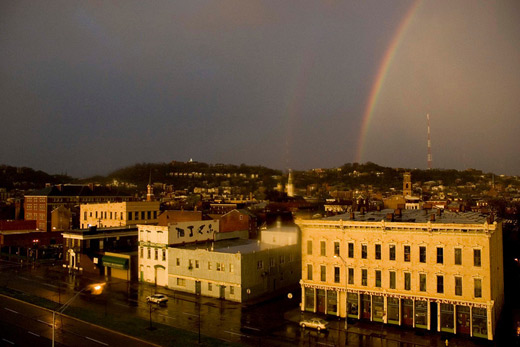
The renaissance taking place throughout Cincinnati's inner city neighborhoods is not happening by coincidence or chance, but rather a transformation is taking place because of a concerted effort by local leaders to invest in those neighborhoods. According to Patricia Garry, Executive Director of the
Community Development Corporations Association of Greater Cincinnati (CDCAGC), the investments being made by Cincinnati-area CDCs are helping to not only direct investment back towards these neighborhoods, but also place the decision making at the neighborhood level.
"The neighborhood is able to make plans for themselves and they are able to partner with private developers to make it happen," said Garry. "This collaboration makes it a lot easier to get project funding because banks know they're good projects and can make money on their investments."
In 2009, the CDCAGC funded 13 local CDCs which in turn developed 34 housing units. The number of CDCs being assisted decreased in 2010 along with the total funding CDCAGC received from the City of Cincinnati. But while there has been approximately $100,000 less to work with, Garry says that production has actually increased. In 2010, the CDCAGC is funding nine local CDCs which are creating 89 housing units with another 140 housing units in pre-development stages.
The investments made by local CDCs are seen as a critical tool in turning around neighborhoods that have long been ignored by private investors.
"When the private market doesn't function it creates a need for Community Development Corporations," Garry explained. "Utilizing the process our CDCs use may take a bit longer upfront, but implementation happens in a second since there is already community support for the project."
The need has been far and wide throughout the Cincinnati region as Garry states that there are approximately 50 CDCs stretching from Northern Kentucky to Middletown. Ten of the most active CDCs are found in Cincinnati's inner city who often partner with
Al Neyer Inc. and
The Model Group - both have a track record of working with neighborhoods and taking advantage of the tax credits that become available by working with CDCs.
Garry plans to keep improving annual performance by capitalizing on potential economies of scale. CDCAGC's Back Office Project will move accounting, information technology and other consulting work to the CDCAGC so that each individual CDC is not burdened by full- or part-time staffing costs, and can instead share those costs across the larger collection of CDCs.
"Our Community Development Corporations often times don't have the money to be fully staffed, but the Back Office Project will allow them to still have their needs met - it's a win for everybody."
Writer:
Randy A. SimesPhotography by Scott BeselerStay connected by following Randy on Twitter
@UrbanCincy
Enjoy this story?
Sign up for free solutions-based reporting in your inbox each week.